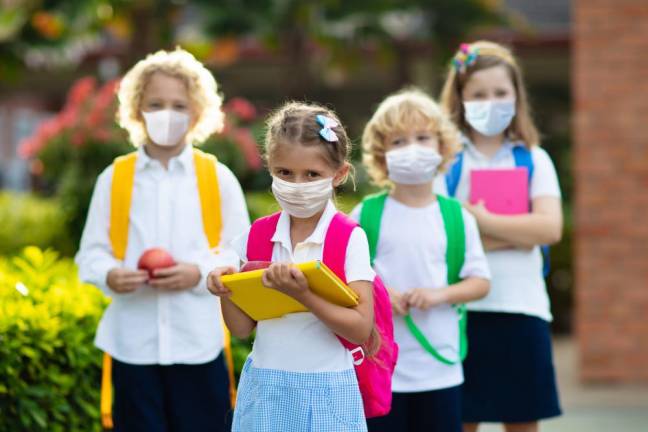(AP) It’s the question on every parent’s mind -- every student’s, too: Will public schools reopen this fall? And if so, what will that look like?
Answers have been understandably difficult to nail down, what with the still-raging coronavirus picking up steam in recent weeks. That’s due in large part to a failure in leadership from President Donald Trump, who has ceded any semblance of responsibility for the well-being of the American people. That failure needn’t be replicated in Pennsylvania when it comes to public schools.
The state Department of Education, perhaps in concert with the Department of Health, must take on a more prominent role in providing guidelines to school districts. The latter department has provided a little broad-brush guidance, requiring students and educators to wear masks unless they are six feet apart, except in cases where a disability would preclude doing so. But that’s a pretty thin reed to hang a reopening plan on. Local districts, left to their own devices, are doing yeoman’s work to fill the gap but are chafing at what they call a lack of solid and consistent guidance.
The Department of Education has, in fact, issued preliminary guidance, but, as the department itself acknowledges, “given the dynamic nature of the COVID-19 pandemic, (our) guidance will evolve.’’ That changing guidance adds to the enormous challenges -- and the consequences -- of reopening schools. The idea of local rule -- letting each district map out its own policies and procedures -- sounds good in theory, but it’s bound to result in a patchwork of well-intended but inconsistent practices.
Take face masks, for example. As the York Dispatch’s Lindsay C. VanAsdalan reports: “West York and Central have them optional for both students and staff -- except in certain situations such as on the bus or where social distancing cannot be maintained. Red Lion Area School District’s version requires all staff to be masked but not all students. Older students should wear a mask or face shield when it’s `appropriate,’ the plan notes.’’
Such confusion on so seemingly basic a component of reopening highlights the difficulties local school boards face. Far better, then, that policies be devised by experts in the fields of public health and education, then modified to meet specific district needs where appropriate. After all, unlike geographic regions throughout the state, which vary widely in terms of population density and other demographics, public schools, no matter their size, face a largely similar challenge: delivering instruction in way that keeps students, teachers, support staff and administrators safe.
This goes far beyond classroom teaching. Transportation, athletics, dining services and extracurricular activities are among the myriad associated services that need to be addressed. Is it reasonable, or even fair, to expect 500 different school boards to come up with 500 different solutions? Will students in those 500 districts be best served by what will by necessity be a hodgepodge of practices? A series of broad, health-minded strategies are needed that can be adjusted to scale depending on the size of the district.
Gov. Tom Wolf should consider appointing an emergency taskforce to tackle this issue. State Health Secretary Dr. Rachel Levine and/or Secretary of Education Pedro Rivera would seem likely candidates to lead the charge. But however it is managed, overarching leadership must step in to craft consistent guidance. Throughout the pandemic, President Trump has left states largely to fend for themselves -- and, in the case of purchasing much-needed ventilators and other supplies, to fight among themselves. It is clear what a failed model this has been. Let’s not mimic it.
The York Dispatch
